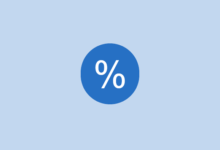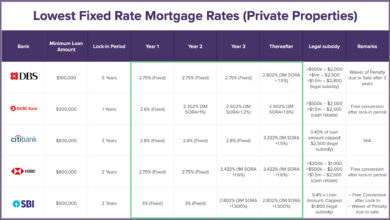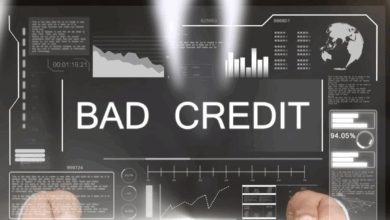Installment Loans For Bad Credit: Accessing Financial Solutions With Ease
When it comes to navigating the realm of finance, installment loans for bad credit stand out as a viable option worth exploring. Dive into this comprehensive guide to understand how these loans can provide a pathway to financial stability, even in challenging circumstances.
As we delve deeper, you’ll uncover valuable insights on credit scores, loan types, application processes, and more, all tailored to individuals seeking financial assistance despite their credit history.
Introduction to Installment Loans for Bad Credit
Installment loans are a type of loan where borrowers repay the borrowed amount over a set period through scheduled payments. Unlike payday loans that require full repayment by the next payday, installment loans allow for more manageable payments over time. However, individuals with bad credit may face challenges when seeking traditional loans due to their credit history.
Bad credit is a term used to describe a low credit score resulting from missed payments, defaults, or high levels of debt. It can make it difficult to qualify for loans with favorable terms or interest rates. In such cases, installment loans for bad credit can be a viable option, as they are designed to cater to individuals with less-than-perfect credit scores.
The benefits of installment loans for bad credit include the opportunity to rebuild credit by making timely payments, access to funds for emergencies or essential expenses, and the ability to budget with fixed monthly payments. Situations where installment loans for bad credit may be necessary include unexpected medical bills, car repairs, or debt consolidation for individuals with poor credit.
Understanding Credit Scores and their Impact on Loan Approval
Credit scores are numerical representations of an individual’s creditworthiness based on their credit history. Factors such as payment history, credit utilization, length of credit history, types of credit used, and new credit applications influence credit scores. Lenders use credit scores to assess the risk of lending money to borrowers.
Credit score ranges typically fall between 300 and 850, with higher scores indicating better creditworthiness. Lenders may view credit scores above 700 as good, while scores below 600 are considered poor. Individuals with lower credit scores may face higher interest rates or stricter loan terms due to the perceived risk by lenders.
To improve credit scores and increase the chances of loan approval, individuals can pay bills on time, reduce overall debt, avoid opening multiple new accounts, and regularly check their credit reports for errors. By taking steps to improve credit health, borrowers can enhance their financial standing and qualify for better loan options.
Exploring Different Types of Installment Loans
Secured installment loans require collateral, such as a home or car, to secure the loan amount, offering lower interest rates but risking asset loss if payments are missed. Unsecured installment loans do not require collateral but come with higher interest rates due to the increased risk for lenders.
Fixed-rate installment loans have a consistent interest rate throughout the loan term, providing predictability in monthly payments. Variable-rate installment loans have interest rates that can fluctuate based on market conditions, leading to potential payment changes over time.
Examples of specific installment loan products available for individuals with bad credit include personal installment loans, auto loans, and debt consolidation loans. These options cater to different financial needs and credit situations, offering flexibility and affordability for borrowers with less-than-perfect credit.
Applying for an Installment Loan with Bad Credit
Applying for an installment loan with bad credit involves gathering necessary documentation, such as proof of income, identification, and banking information. Lenders specializing in installment loans for bad credit may require additional documents or information to assess a borrower’s ability to repay the loan.
To find reputable lenders that specialize in installment loans for bad credit, individuals can research online reviews, check with local credit unions or community banks, and compare loan terms and interest rates. It is essential to review the terms and conditions carefully, understand the total cost of borrowing, and ensure the repayment schedule fits within the budget to avoid further financial strain.
Types of Installment Loans for Bad Credit
When it comes to installment loans for individuals with bad credit, there are various options available to meet their financial needs. These loans can be a lifeline for those who may not qualify for traditional loans due to poor credit scores. Let’s delve into the different types of installment loans, the eligibility criteria, and the terms and conditions associated with them.
Secured vs. Unsecured Installment Loans
Secured installment loans require collateral, such as a car or property, to secure the loan. This reduces the risk for the lender, making it easier to obtain approval even with bad credit. On the other hand, unsecured installment loans do not require collateral but may have higher interest rates due to the increased risk for the lender.
Eligibility Criteria
To apply for installment loans with bad credit, borrowers typically need to demonstrate a stable income, provide proof of identity and address, and have a valid bank account. Lenders may also consider factors such as employment history and debt-to-income ratio when evaluating eligibility.
Terms and Conditions
The terms and conditions of installment loans for bad credit can vary depending on the lender. Borrowers should pay close attention to the interest rates, repayment schedule, and any additional fees associated with the loan. It is important to carefully review the terms and conditions to ensure that the loan is affordable and manageable within your financial situation.
Application Process for Installment Loans for Bad Credit
When applying for installment loans with bad credit, individuals need to follow a specific step-by-step process to increase their chances of approval and secure the funds they need. Additionally, providing the necessary documentation and understanding the timeline from application to disbursement is crucial for a smooth borrowing experience.
Step-by-Step Process of Applying for an Installment Loan with Bad Credit
- Research Lenders: Start by researching lenders that offer installment loans for bad credit and compare their terms and conditions.
- Check Eligibility: Determine the eligibility criteria set by the lender and ensure that you meet the requirements before applying.
- Submit Application: Fill out the application form accurately and provide all the necessary information requested by the lender.
- Verification Process: The lender will verify the information provided in your application, which may include a credit check.
- Approval and Terms: If approved, review the loan terms carefully, including interest rates, repayment schedule, and any additional fees.
- Acceptance and Disbursement: Once you agree to the terms, the funds will be disbursed to your bank account, usually within a few business days.
Tips to Improve Approval Chances for Individuals with Bad Credit
- Improve Credit Score: Work on improving your credit score before applying for an installment loan to increase your chances of approval.
- Add a Co-Signer: Consider adding a co-signer with good credit to strengthen your application and improve approval odds.
- Show Stable Income: Demonstrate a stable source of income to reassure lenders of your ability to repay the loan on time.
Documentation Required When Applying for Installment Loans
- Proof of Identity: Provide a valid government-issued ID to verify your identity.
- Proof of Income: Submit pay stubs, bank statements, or tax returns to prove your income level.
- Proof of Residence: Present utility bills or a lease agreement to confirm your residential address.
- Additional Documents: Depending on the lender, you may need to provide additional documents to support your application.
Timeline from Application to Disbursement of Funds
After submitting your application, the approval process typically takes a few business days. Once approved, the funds are usually disbursed to your bank account within 1-5 business days, depending on the lender’s policies and your banking institution.
Interest Rates and Fees
When it comes to installment loans for bad credit, understanding the interest rates and fees involved is crucial for borrowers. Let’s delve into how these rates are determined and the impact of credit scores on them.
Interest Rates Determination
Interest rates for installment loans are typically higher for borrowers with bad credit compared to those with good credit. Lenders consider the risk associated with lending to individuals with poor credit, leading to higher interest rates to compensate for that risk.
Impact of Credit Scores
Credit scores play a significant role in determining the interest rates and fees for installment loans. The lower the credit score, the higher the interest rate is likely to be. Borrowers with bad credit may face interest rates that are substantially higher than those offered to borrowers with good credit.
Common Fees
Some common fees associated with installment loans for bad credit include origination fees, late payment fees, prepayment penalties, and insufficient funds fees. These fees can add to the overall cost of the loan, so it’s essential for borrowers to be aware of them before taking out a loan.
Comparison of Rates and Fees
Different lenders offering installment loans for bad credit may have varying interest rates and fee structures. It’s advisable for borrowers to compare rates and fees from multiple lenders to find the most affordable option that suits their financial situation.
Analyzing Loan Terms
Understanding the terms of a loan agreement is vital for borrowers to make informed decisions. Let’s break down the components of loan terms and explain the difference between fixed and variable interest rates.
Components of Loan Term Agreement
A loan term agreement typically includes the loan amount, interest rate, repayment schedule, total repayment amount, and any applicable fees. Borrowers should carefully review these components before agreeing to the loan terms.
Fixed vs. Variable Interest Rates
Fixed interest rates remain the same throughout the loan term, providing borrowers with predictable monthly payments. On the other hand, variable interest rates may fluctuate based on market conditions, leading to potential changes in monthly payments.
Calculating Total Loan Cost
To calculate the total cost of a loan, borrowers can use the formula:
Total Loan Cost = Loan Amount + Total Interest + Fees
By plugging in the values for the loan amount, total interest, and fees, borrowers can determine the overall cost of borrowing.
Comparison of Short-term and Long-term Loans
Here is a table comparing the loan terms of short-term and long-term loans:
| Loan Type | Term Length | Interest Rate | Total Repayment Amount |
|---|---|---|---|
| Short-term Loan | 6 months | 12% | $1,200 |
| Long-term Loan | 36 months | 8% | $2,400 |
Repayment Options
When it comes to installment loans for bad credit, having a variety of repayment options can make managing your finances easier. Understanding the pros and cons of each repayment plan, as well as learning how to effectively manage loan repayments, is crucial to staying on top of your financial obligations and avoiding any negative consequences.
Types of Repayment Options
- Fixed Monthly Payments: This option involves paying a set amount each month until the loan is fully repaid. It provides predictability and makes budgeting easier, but may not offer flexibility if your financial situation changes.
- Bi-Weekly Payments: With this option, you make payments every two weeks, which can help you pay off the loan faster and reduce the total interest paid over time. However, it may require stricter budgeting.
- Variable Payments: Some lenders offer the flexibility to make variable payments based on your financial situation. This can be helpful during times of financial hardship but may result in higher overall interest costs.
Tips for Effective Loan Repayments
- Set up automatic payments to avoid missing due dates and late fees.
- Create a budget to ensure you can afford your loan payments each month.
- Contact your lender if you are facing financial difficulties to explore options for temporary relief or restructuring.
Consequences of Missing Payments
- Late Fees: Missing payments can result in additional fees, increasing the overall cost of the loan.
- Damage to Credit Score: Defaulting on payments can negatively impact your credit score, making it harder to qualify for loans in the future.
- Potential Legal Action: In extreme cases, lenders may take legal action to recover the outstanding debt, leading to further financial stress.
Benefits of Installment Loans for Bad Credit
Installment loans for bad credit offer several advantages for individuals facing financial challenges due to poor credit scores. These loans provide a structured repayment plan that can help borrowers manage their debts more effectively and gradually improve their credit standing over time.
Improving Credit Scores
- Timely payments on installment loans can demonstrate responsible financial behavior to credit bureaus, leading to a positive impact on credit scores.
- Consistent repayment of installment loans can show a pattern of reliability and commitment to meeting financial obligations.
Real-life Examples of Benefits
- A borrower with a low credit score successfully repaid an installment loan, leading to a noticeable increase in their credit score within a few months.
- Another individual used an installment loan to consolidate existing debts, simplify their payments, and gradually improve their credit profile.
Stepping Stone to Financial Stability
- Installment loans for bad credit can provide access to necessary funds for emergencies or essential expenses, helping individuals avoid more expensive alternatives like payday loans.
- By responsibly managing installment loan payments, borrowers can establish a positive credit history and work towards achieving financial stability in the long term.
Risks and Challenges
Taking out installment loans for bad credit comes with certain risks and challenges that borrowers need to be aware of in order to make informed decisions. It’s essential to understand the potential pitfalls and have strategies in place to mitigate these risks effectively.
Detailed Risk Analysis
When individuals with bad credit opt for installment loans, they face specific financial risks that can impact their overall financial health. High interest rates attached to these loans can significantly increase the total repayment amount, putting a strain on the borrower’s finances. Missing payments or defaulting on the loan can further damage the borrower’s credit score, making it harder to access credit in the future. Real-world examples and statistics can illustrate the serious consequences of these risks, emphasizing the importance of careful financial planning.
Challenges in Loan Repayment
During the repayment period, borrowers may encounter common obstacles such as unexpected expenses or fluctuations in income. The psychological impact of long-term debt can also take a toll on a borrower’s mental well-being. To navigate these challenges effectively, budgeting and financial planning are crucial. It’s essential for borrowers to communicate with lenders in case of financial hardship or difficulties meeting payment deadlines, as early intervention can prevent further financial strain.
Case Studies and Solutions
By presenting case studies of individuals who successfully managed their installment loans despite having bad credit, valuable insights can be gained. These success stories can highlight the strategies implemented to avoid default and improve financial situations over time. Contrasting these with cautionary tales of borrowers who faced severe consequences due to mismanagement serves as a powerful reminder of the importance of responsible borrowing. Extracting key lessons from each case study provides practical advice for individuals facing similar situations.
Alternatives to Installment Loans for Bad Credit
When facing financial challenges with bad credit, individuals may explore alternative financing options to meet their needs. These alternatives offer different terms and conditions compared to traditional installment loans, providing flexibility and potential benefits for those with poor credit scores.
1. Payday Loans
Payday loans are short-term, high-interest loans typically due on the borrower’s next payday. Unlike installment loans, payday loans require the borrower to repay the full amount, including fees, in one lump sum. These loans are often easier to qualify for but come with significantly higher interest rates.
2. Secured Credit Cards
Secured credit cards require a cash deposit as collateral, making them accessible to individuals with bad credit. By responsibly using a secured credit card, borrowers can rebuild their credit history over time. However, these cards may have annual fees and higher interest rates than traditional credit cards.
3. Personal Lines of Credit
Personal lines of credit offer a revolving credit limit that borrowers can access as needed. Similar to credit cards, these lines of credit allow for flexibility in borrowing and repayment. While interest rates may be lower than payday loans, applicants with bad credit may face higher rates and stricter eligibility criteria.
4. Peer-to-Peer Lending
Peer-to-peer lending platforms connect borrowers with individual investors willing to fund their loans. These online platforms may offer more competitive rates compared to traditional lenders, but approval is not guaranteed. Borrowers with bad credit may still qualify for peer-to-peer loans, albeit with higher interest rates.
5. Credit Union Loans
Credit unions are non-profit financial institutions that may offer more lenient terms for individuals with bad credit. Credit union loans, including personal loans and payday alternative loans, provide an alternative to traditional banks. While eligibility criteria vary, credit unions typically prioritize member relationships over credit scores.
Regulations and Legal Aspects
In the realm of installment loans for bad credit, there are specific regulatory frameworks in place to govern the operations of lenders and protect the rights of borrowers with low credit scores. It is essential to understand the legal aspects surrounding these loans to ensure compliance and fair treatment for all parties involved.
Regulatory Framework for Installment Loans for Bad Credit
- The regulatory framework for installment loans for bad credit varies by state, with each jurisdiction having its own set of rules and guidelines.
- Laws such as the Truth in Lending Act (TILA) and the Equal Credit Opportunity Act (ECOA) provide protection to borrowers by requiring lenders to disclose loan terms and prohibiting discrimination based on factors like race, gender, or age.
- State regulations may impose interest rate caps to prevent predatory lending practices and ensure that borrowers are not subjected to exorbitant fees and charges.
Legal Rights and Responsibilities of Lenders and Borrowers
- Lenders have the legal responsibility to provide clear and transparent information about loan terms, including interest rates, fees, and repayment options.
- Borrowers have the right to understand the terms of the loan agreement before signing and to file complaints or seek recourse in case of unfair treatment or violations of consumer protection laws.
Role of Credit Reporting Agencies
- Credit reporting agencies play a crucial role in monitoring borrowers’ creditworthiness for installment loans for bad credit by providing lenders with information on applicants’ credit history and scores.
- Borrowers should be aware of their rights under the Fair Credit Reporting Act (FCRA) to ensure the accuracy of their credit reports and dispute any errors that may affect their ability to access credit.
Consequences of Defaulting on Installment Loans
- Defaulting on an installment loan for bad credit can have serious consequences, including damage to the borrower’s credit score, collection efforts by the lender, and potential legal action to recover the outstanding debt.
- It is essential for borrowers to understand their rights and options in case they are unable to make timely payments to avoid further financial repercussions.
Impact on Credit Score
When it comes to installment loans for bad credit, understanding the impact on your credit score is crucial. Let’s delve into how taking out such loans can influence your creditworthiness and overall financial health.
Positive and Negative Impacts
- Taking out an installment loan for bad credit can have a positive impact if you make timely payments. It shows lenders that you are responsible and can help improve your credit score over time.
- On the flip side, missing payments or defaulting on the loan can severely damage your credit score, making it harder to access credit in the future.
- It’s essential to use installment loans strategically, making payments on time and in full to boost your creditworthiness.
Long-Term Implications
When you use installment loans for bad credit wisely, it can have long-term benefits by gradually improving your credit score. This, in turn, can lead to better interest rates on future loans and increased financial opportunities.
However, failing to manage these loans properly can have lasting negative effects on your credit history and financial health.
Case Studies and Success Stories
In this section, we will explore real-life examples of individuals who have successfully utilized installment loans to overcome bad credit situations and achieve their financial goals.
Case Study 1: Homeownership Dream Fulfillment
- John, a single father with a low credit score due to past financial struggles, wanted to buy a home for his family.
- By securing an installment loan specifically designed for individuals with bad credit, John was able to make a down payment on a modest home.
- Through responsible repayment and improved financial management, John successfully paid off the loan and now enjoys the security and stability of homeownership.
Case Study 2: Entrepreneurial Venture Support
- Sarah, a budding entrepreneur with a tarnished credit history, needed funding to start her own business.
- With the help of an installment loan tailored for individuals with bad credit, Sarah was able to launch her business and cover initial expenses.
- By making timely repayments and effectively managing her finances, Sarah not only grew her business but also improved her credit score significantly.
Success Story: Credit Score Transformation
- Michael, a recent college graduate burdened by student loan debt and a poor credit score, decided to take control of his finances.
- By utilizing an installment loan to consolidate his debts and make consistent payments, Michael saw a gradual improvement in his credit score over time.
- Through discipline and financial planning, Michael was able to boost his credit score, opening doors to better loan options and financial opportunities.
Impact Assessment: Before and After Installment Loans
- Before utilizing installment loans, many individuals faced financial uncertainty, limited borrowing options, and struggled with debt.
- After responsibly using installment loans, these individuals experienced increased financial stability, improved credit scores, and a brighter financial future.
- Testimonials from satisfied borrowers highlight the positive impact of installment loans on their lives, showcasing how these financial tools can be transformative for those with bad credit.
Financial Literacy and Education
Financial literacy plays a crucial role in empowering individuals to make informed financial decisions, especially when considering installment loans for bad credit. By enhancing financial knowledge and decision-making skills, individuals can effectively manage their debt, prevent bad credit situations, and improve their overall financial well-being.
Importance of Financial Literacy
Financial literacy is essential for individuals looking to navigate the complexities of installment loans for bad credit. It helps them understand the terms and conditions of the loan, evaluate their repayment capacity, and make sound financial choices.
Resources and Tools for Financial Education
- Online financial literacy courses and workshops
- Financial management apps and tools
- Personal finance books and resources
Role of Financial Education in Debt Management
Financial education equips individuals with the necessary skills to manage debt effectively, including creating a budget, setting financial goals, and developing a savings plan. By improving financial literacy, individuals can avoid falling into debt traps and improve their credit scores over time.
Practical Advice for Budgeting and Saving
- Create a monthly budget outlining income and expenses
- Set aside a portion of income for savings and emergencies
- Avoid unnecessary expenses and prioritize financial goals
Building Credit with Low Credit Scores
- Regularly check credit reports for inaccuracies
- Consider secured credit cards or credit-builder loans
- Make timely payments on existing debts to improve credit score
Future Trends and Outlook
The landscape of bad credit financing is continuously evolving, influenced by various factors such as market trends, regulatory changes, and technological advancements. Understanding the future trends and outlook of installment loans for individuals with bad credit is essential for both borrowers and lenders to navigate the changing financial environment effectively.
Emerging Trends in Bad Credit Installment Loans
- Increased use of alternative data sources for credit assessment: Lenders are exploring non-traditional data sources such as utility payments, rental history, and even social media behavior to assess the creditworthiness of borrowers with limited credit history.
- Rise of online lending platforms: The convenience and accessibility of online lenders have gained popularity among bad credit borrowers, offering quick approval processes and streamlined application experiences.
- Personalized loan products: Lenders are focusing on creating tailored loan products that cater to the specific needs and financial situations of individuals with bad credit, offering flexible repayment terms and lower interest rates.
Innovations in Bad Credit Financing
- Integration of artificial intelligence and machine learning: Lenders are leveraging advanced technologies to automate credit decisions, improve risk assessment, and enhance the overall borrowing experience for bad credit applicants.
- Growth of peer-to-peer lending: Peer-to-peer platforms are providing alternative funding options for bad credit borrowers by connecting them directly with individual investors willing to fund their loans.
- Expansion of microloans and payday alternatives: Smaller loan amounts and shorter repayment periods are becoming more prevalent in the bad credit financing market, offering affordable borrowing options for those in need of immediate cash.
Regulatory Impact on Bad Credit Financing
- Tightening of lending regulations: Stricter regulatory policies aimed at protecting consumers and preventing predatory lending practices may impact the availability and terms of installment loans for individuals with bad credit.
- Promotion of financial inclusion: Regulatory initiatives focused on promoting financial inclusion and expanding access to credit for underserved populations could lead to more favorable loan options for bad credit borrowers.
- Collaboration with regulatory bodies: Lenders are increasingly collaborating with regulatory authorities to ensure compliance with existing laws and regulations, fostering a more transparent and trustworthy lending environment for all parties involved.
Ultimate Conclusion
In conclusion, installment loans for bad credit offer a ray of hope for those in need of financial support. By understanding the nuances of these loans and making informed decisions, individuals can pave the way towards a brighter financial future.







